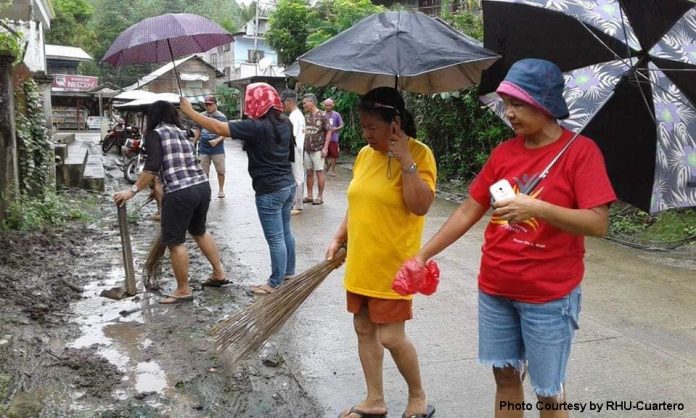
ILOILO City – The surge in dengue cases has something to do with the people’s attitude toward the problem, according to a medical officer of the Department of Health (DOH) in Western Visayas.
Since Jan. 1 this year, the number of deaths due to dengue in Region 6 rose to 17, DOH data showed. Negros Occidental had eight; Iloilo, three; Aklan and Iloilo City with two each; and Capiz and Bacolod City with one each.
“It’s becoming cyclical kay gakampante kita. Abi naton okay na ang aton pagpanglimpyo,” said Dr. Rosemarie Lamirez.
The “4S strategy” must be enhanced, she stressed, referring to the following practical steps:
* search and destroy mosquito breeding places
* self-protection measures (wearing of long sleeved clothes and trousers, and using mosquito nets and repellants)
* seek early consultation for fever lasting more than two days
* say “no” to indiscriminate fogging.
Dengue hemorrhagic fever is an acute mosquito-borne viral infection that affects infants, young children and adults.
Lamirez pressed for changes in people’s attitude, specifically toward the cleaning of surroundings to get rid of the breeding places of dengue mosquitos that live in clear, stagnant water.
The 4S strategy must be done regularly and continuously, said Lamirez, and this must start at home.
This year DOH-6 is expecting an increase in dengue cases, citing a three-year surge cycle or pattern previously observed.
“In 2010 we recorded a high of 27,264 cases then a drop in the next two years. On the third year, 2013, nagtaas naman to 22,393 cases. Then after two years of dwindling cases, there was a surge in 2016 – 26,440 cases,” said Lamirez.
DOH-6 recorded a total of 3,558 dengue cases (already including the 17 deaths) from Jan. 1 to March 2, 2019 – 133 percent higher than the 1,528 cases (with eight deaths) reported within the same period last year.
Dengue symptoms, which usually begin four to six days after infection, include sudden, high fever, severe headaches, pain behind the eyes, severe joint and muscle pain, fatigue, nausea, vomiting, skin rash which appears two to five days after the onset of fever, and even mild bleeding (such a nose bleed, bleeding gums, or easy bruising).
From January to December last year, DOH-6 recorded 17,419 cases with 111 deaths.
Of the of 3,558 dengue cases so far recorded since Jan. 1 this year, Negros Occidental had most number at 1,245; followed by Iloilo with 623; Capiz, 469; Aklan, 423; Iloilo City, 324; Bacolod City, 301; Antique, 79; Guimaras, 54; and others, 40.
It was announced just this November 2018 that Western Visayas was one of three pilot regions for the rollout of a new and locally developed technology for diagnosing dengue.
Biotek-M, rapid dengue test kit, had been approved for clinical use by the Food and Drug Administration, according to Dr. Raul V. Destura, the molecular microbiologist who developed this new dengue test.
This locally developed technology was also less costly, he added.
“I am very proud that the Department of Health is adopting it. We were here a couple of months ago kasi tini-train namin ang mga medical technologists ng Western Visayas,” said Destura.
The development of Biotek-M was fully funded by the government through the Department of Science and Technology and University of the Philippines.
The rapid dengue test kit is intended to reach marginalized sectors, particularly via barangay health centers, according to Destura.
The two other pilot regions for Biotek-M were the Ilocos Region and the Zamboanga Peninsula./PN





